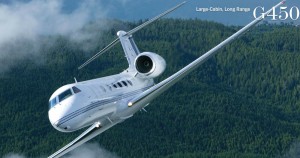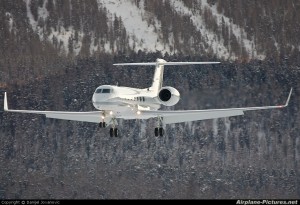It’s day seven and we’re back at it! I’m starting to see how SimuFlite has designed this course. The first week was all about learning the aircraft’s systems. This week will focus on two things:
- “Abnormals” – pilot lingo for dealing with things on the airplane fail or don’t work the way they are supposed to, and
- Simulator Prep – primarily working through flows, checklists, etc. in a mockup of the cockpit, as well as more advanced programming of the avionics (especially the FMS)
We spent the the first hour this morning answering electrical and hydraulic system questions from our instructor. I’m still unclear about exactly what level of systems knowledge will be required for the checkride. Is the examiner going to care, for example, whether I know the exact power output of the ABEX standby electrical system or how fast the hydraulic motor turns? I’ve asked that question, but keep getting different answers. We’ve worked with three instructors so far, and one said no, another said we’d be okay just looking up that sort of thing on the spot, and the third guy didn’t really give a definitive answer.
After the systems review, we worked through some performance computations using the Quick Reference Handbook (QRH). The jet’s FMS normally computes all our V-speeds, TOLD numbers, and other data based on raw data we feed it, however there’s always the possibility it could malfunction, so we have to prove we can pull the data out of the book manually.
We also ran through a weight & balance scenario for the aircraft. The G-IV is, as with many things, elegantly simple in that regard. As long as the zero fuel weight is within the allowable CG range, there is no way the aircraft will be out of CG no matter how much fuel is added or how much you burn off during a flight. The fuel load doesn’t need to be entered — the airplane always knows how much fuel is on board. Between that and the single point refueling, there’s never any need to come in contact with the fuel at all. The same is true of the engine oil. You simply look at a sight gauge to determine the oil level for the engines. If oil needs to be added, you simply flip a switch to activate a pump and transfer it from a tank in the tail of the fuselage to the appropriate engine.
After lunch, the schedule called for us to split into two groups. One group was to work in the avionics trainer, and the other in the IPT trainer. However, our instructor apologized and told us that he was the only one available. Apparently business has been somewhat slow for SimuFlite because of the economy, and as a result they’ve cut back on the numbers of instructors on staff.
Thankfully, this cloud had a silver lining: fewer students at the training center means the Level D sim is just sitting there empty for part of the day. So instead of working in the IPT we were able to utilize the full-blown simulator, albeit with the motion turned off. My sim partner and I worked through all the functional checks, checklists, etc. and made a short flight during our two hour block. The flight was short because we stopped frequently so our instructor could give us input on this or that.
Things are still not running as smoothly as I’d like, but they’re getting better every time I jump in there. I’m mindful of the fact that most people don’t even see the sim until day 12, and I’ve already been in there twice by day 7.
A big part of the challenge here is learning not only the airplane, but also SimuFlite’s standard operating procedures for the Gulfstream IV. They have their own callouts, CRM procedures, checklists, and so on. Much of this simply has to be memorized well enough that you can do it automatically, because things happen quickly when you’re taking off with nearly 28,000 pounds of thrust. If you’re close to overload or “behind the airplane”, it won’t end well if something fails. And in the simulator, you can count on things “failing” at the most inopportune time. Heck, that’s what I do with my students. 🙂
Before I knew it, our two hours were up and we swapped with the other two pilots. My sim partner and I spent another hour or so debriefing our flight, making notes in the checklist, and coming up with a study strategy for the next few days.
One disappointment is the inexactitude with which I have answered some questions from the instructor when quizzed orally on a topic.
“What exactly are you looking for when you test the pressurization system?”
“If the left converter fails in flight and the APU is offline, which power source will the EPMP connect to if all six switches are in AUTO?”
“What wheel spin-up speed is required to get a ground spoiler warning if the primary control valve fails with the power levers out of idle?”
Come to think of it, I can’t remember the answer to that last one. Excuse me while I hit the books…


